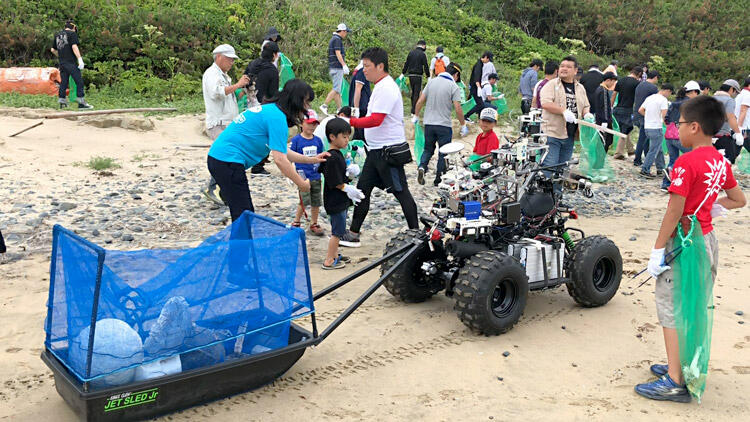
(Provided by The Institute of BC-ROBOP Coastal Engineering)
Munakata City, Fukuoka Prefecture, is home to the Munakata Taisha Shinto shrines, which have been inscribed on the UNESCO World Heritage List. A great many ships have come and gone there since antiquity, and it was also an excellent fishing ground. It used to be the case that flotsam such as cargo from ships in distress frequently washed ashore there, but in recent years the coastline is being deluged by marine litter including large amounts of plastic waste. To address this serious problem, robotics researchers and coastline environmental preservation specialists have joined forces, aiming to create ways of reducing marine litter.
In times past, flotsam was repurposed as construction materials
Located between the two great modern-day cities of Fukuoka Prefecture, Fukuoka City and Kitakyushu City, Munakata City prospered from ancient times as a hub for trade with the Asian continent. In those days, many ships ran into difficulties in the Genkai Sea, with their cargo washing ashore in the Munakata area. It is said that the locals reused the cargo as construction materials. In addition, the island of Okinoshima, where the Munakata Taisha Okitsu-miya shrine is located, served as an important waypoint when navigating this treacherous stretch of ocean. In fact, the entire island is an object of worship believed to contain the spirit of a deity, and traces of saishi rituals, in which mariners pray for safe passage, remain even today. The many other remaining traces and treasures conveying ancient beliefs and culture to the present led to its inscription on the World Heritage List in 2017 as the Sacred Island of Okinoshima and Associated Sites in the Munakata Region.
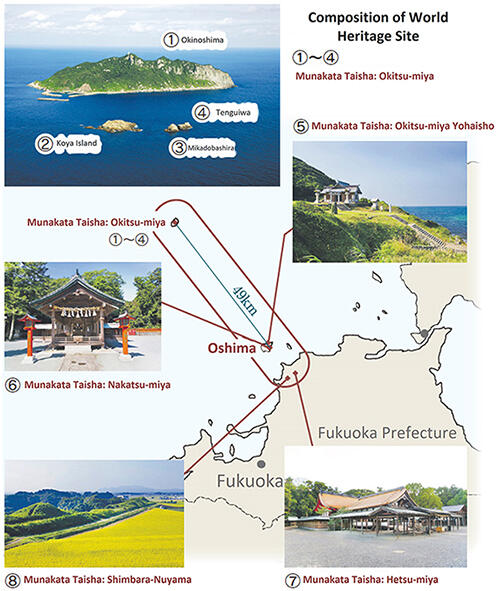
(From the Munakata City website (translanted by Science Japan))
However, the plastic waste washing ashore on the Munakata City coastline, including the island of Okinoshima, is a serious issue today. To address the situation, Associate Professor at Kyushu University Satoquo Seino has collaborated with local residents, fishing industry stakeholders, and volunteer groups on a range of initiatives, including coastline cleanups and symposiums.
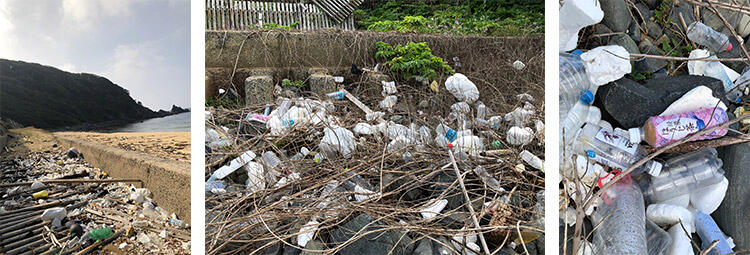
(Provided by Satoquo Seino)
Seino explains that "I have been researching ways to deal with marine litter for around 30 years." While a legal framework has been put in place, the only effective way to pick up marine litter is volunteering by local residents. However, picking up many pieces of litter varying widely in size is physically demanding work, and once cleaned up, before long large amounts wash ashore again. At the same time, the local population is decreasing, and many of the residents who pick up the litter are aging. Seino summarizes the situation as "it feels like a fruitless effort, because however hard you work there is no end to it, and people ultimately feel like giving up."
An issue not just for the Kyushu coastline, but the entire marine ecosystem
So, why does so much marine litter accumulate on the Munakata coastline?
Marine litter drifts across a wide area due to ocean currents and winds, but it also tends to pile up in certain areas. For example, debris from houses swept away by the tsunami after the 2011 Great East Japan Earthquake washed up on the west coast of the United States, but a large amount of litter also drifts to Japan from overseas.
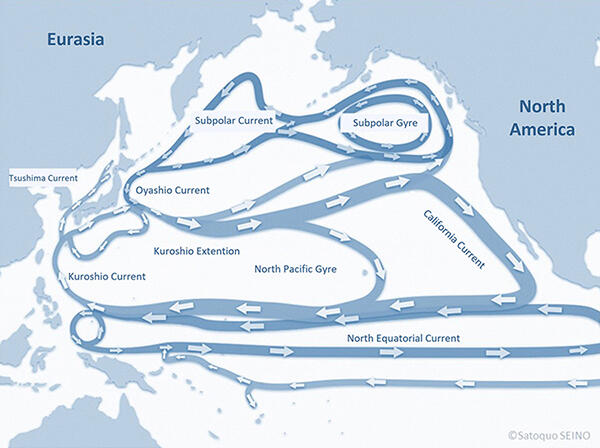
(Provided by Satoquo Seino and translated by Science Japan)
Japan is heavily affected by the Tsushima Current and the Kuroshio Current as well as south-easterly winds in summer and the north-westerlies in winter. These currents push large amounts of litter onto the Kyushu coastline, with the local topography further causing much of it to pile up. These currents bring plentiful nutrients, encouraging species such as bluefin tuna and Japanese flying squid to head south to spawn. However, environmental degradation causes the numbers of these migratory fish to decrease, leading to further impacts on other oceanic regions. "Marine litter is an issue not just for the Kyushu coastline, but the entire marine ecosystem" warns Professor Eiji Hayashi of the Kyushu Institute of Technology.
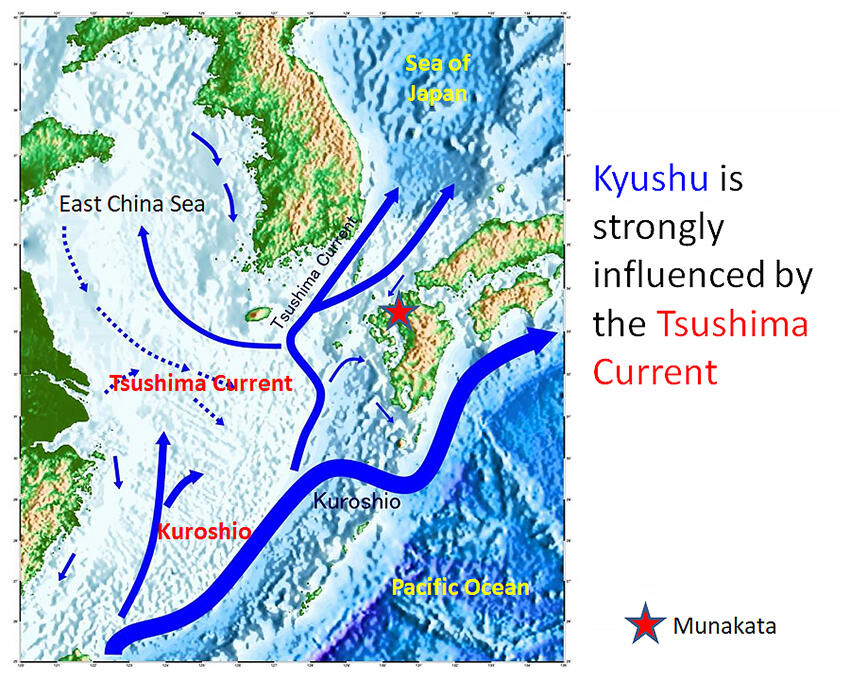
(Provided by Satoquo Seino and translated by Science Japan)
At least 65% is plastic products and 80% originates from on land
Currently, large volumes of litter flow from rivers into oceans around the world, polluting coastlines and affecting ecosystems and residents' lives. In addition to glass bottles, driftwood, and plastic products such as PET bottles, expanded polystyrene, and fishing gear, this litter includes large items of waste such as home appliances. While the total volume has yet to be ascertained, it is estimated at around 50 to 100 million tons for the Pacific rim alone.
At least 65% of marine litter in Japan is plastic products, and approximately 80% of it originates from on land. Cheap, lightweight, durable, and corrosion-resistant plastic products have been adapted into many forms to support convenient modern lifestyles. However, large quantities of plastic products have been consumed and disposed of, and while they break up due to ultraviolet degradation, they become microplastics of 5 millimeters or smaller, flowing into rivers and wastewater and ultimately accumulating in the ocean. Once plastic products break down into microplastics they are almost impossible to collect, are inadvertently consumed by marine organisms and cause severe adverse effects on ecosystems.
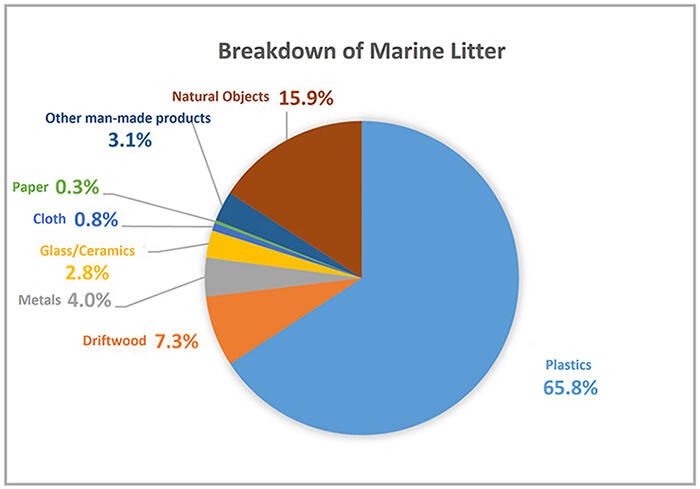
(Recent trends in marine litter; created by the the Science Portal Editorial Office and translated by Science Japan based on September 2018 Ministry of the Environment data)
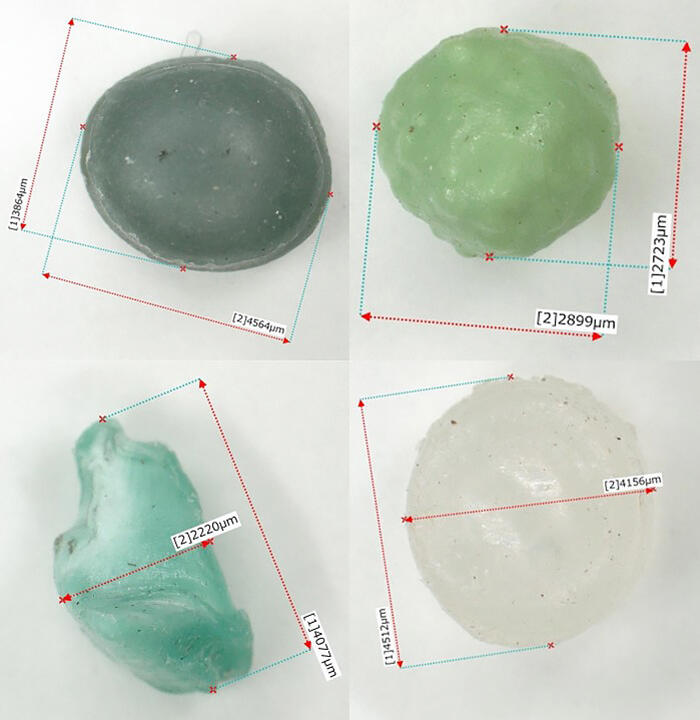
(Provided from research materials by Song et al, Ecological Engineering Lab, Kyushu University)
Breakthroughs addressing issues facing communities such as the aging population
Through her activities, Seino came to believe that "one reason the marine litter problem remains unresolved is likely because we have not engaged with social implementation of technology." Perceiving the necessity for new ways of tacking problems, Seino reached out to Hayashi.
Hayashi had for some time been involved in the research and development of autonomous robots, going as far as conducting proof-of-concept trials for robots doing surveys or clearing away underbrush in the forestry field. These robots can proceed through an area while working around a range of obstacles. Hayashi explained the project's origins, commenting that "marine litter is a tricky problem to deal with. I felt that robots could at least cart the trash away, so we began with some tests." Before long, Hayashi began to fully engage with measures against marine litter, leading to the formation of The Institute of BC-ROBOP Coastal Engineering in 2018, with Seino as the Chair.
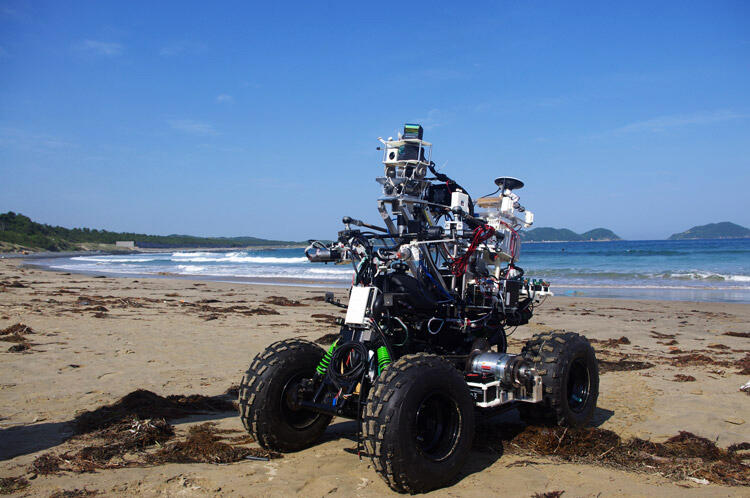
(Provided by The Institute of BC-ROBOP Coastal Engineering)
When they actually introduced robots to coastline cleanup efforts, the participants' reaction was better than they expected. "When the robot is moving, everyone piles litter onto it. I was surprised that they accepted it so easily" commented Mr. Hayashi. In the past, there were apparently many people who opposed the introduction of robots due to harboring uncertainty or suspicion about their capabilities, but Mr. Hayashi feels that the times have changed.
Beach cleanup days using robots have attracted a lot of attention, including being featured in the media. In addition, the appearance of robots has led to young people and families with children who had not previously been involved much also participating in cleanup activities. Robots are expected to provide breakthroughs addressing issues facing communities such as the aging population and low community engagement.
Munakata, an ideal source of open innovation
Seino explains that "I believe that a major driver [in terms of activities making progress] is how local government officials here are passionate about discussing science and technology." Kitakyushu City includes the Yawata Steel Works, a constituent site of the World Heritage Sites of Japan's Meiji Industrial Revolution, and is therefore a region that has been on the leading edge of technological innovation in modern Japan. In addition, many people in Munakata work in industrial areas, and so are likely highly interested in science and technology.
Moreover, Munakata has a long history of embracing a wide range of goods and ideas originating elsewhere. With its culture of collaboration between industry, government, and academia plus resident engagement, Munakata is likely to be an ideal region for generating open innovation. Seino agrees, noting that "we hold coastline cleanup initiatives in a variety of locations, but this was the best area to introduce robots for the first time."
Hayashi adds that "If you are going to move ahead with social implementation, I believe you can take the first step to addressing issues by engaging with a community to find the points you have in common while developing technology at the same time."
To address local issues, it is necessary to find an approach that suits the characteristics of that community. For example, the problem of marine litter does not only affect Munakata, but rolling out solutions to other communities requires a different approach. A researcher's role includes thinking about those alternative approaches.
Scrutinize and carefully analyze the community you live in
For any problem, not just marine litter, knowing a community is essential to finding an approach to address issues that suits that community. Seino notes that "I want people to, from a young age, scrutinize and carefully analyze the community they live in. The understanding you gain of your own community will later become a vital base as you expand your knowledge of the world." Hayashi adds his message that "even if you move away from the area you were born and raised in, there are many ways to contribute to your hometown. I want our young people to keep that awareness with them."
It goes without saying that science and technology are not the only ways to make a contribution. "For example, people from many countries share a historical connection regarding the problem of marine litter. I don't think this issue will be solved until we communicate really well and pledge to work towards sustainable development together," notes Seino. The history and culture that a community has nurtured are deeply intertwined with social issues, and a path to making improvements is likely to become visible by focusing on that history and culture.
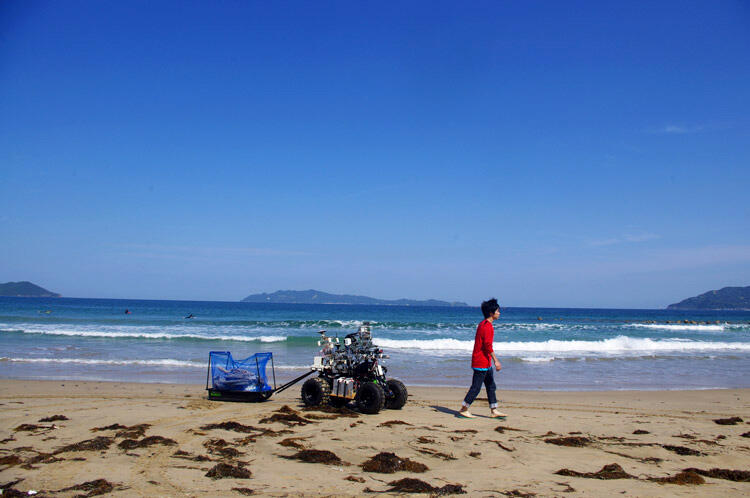
(Provided by The Institute of BC-ROBOP Coastal Engineering)
A demonstration using robots was held during a beach cleanup day at Hokutonomizukumi Seaside Park in Munakata City on July 17, 2022, with the Science Agora in Munakata collaboration gathering held the following day. It is possible that the participants may have discovered hints that inspired rethinking of the issues facing the communities they live in.
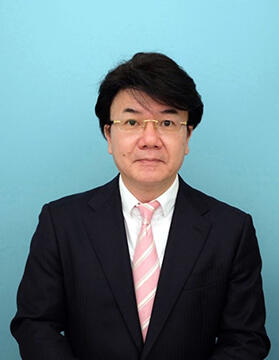
HAYASHI Eiji
Professor, Faculty of Computer Science and Systems Engineering Department of Intelligent and Control Systems, Kyushu Institute of Technology
Completed a Doctoral program in mechanical engineering from the School of Science and Engineering, Waseda University in 1994. After working as a research assistant at Waseda University, a researcher at the Department of Mechanical Engineering, Massachusetts Institute of Technology, and as an associate professor at the Faculty of Computer Science and Systems Engineering, Department of Mechanical Information Science and Technology, Kyushu Institute of Technology, he has been in his current position since 2019. Since 2018, he also served as the Deputy Director at the Center for Socio-Robotic Synthesis, and since 2020, as the Director. From 2019 to 2020, Deputy Director (Regional University / Regional Industry Creation Project).
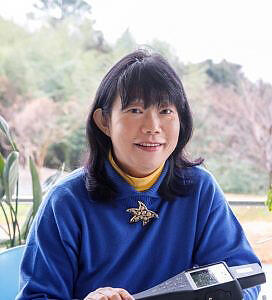
SEINO Satoquo
Associate Professor, Graduate School of Engineering, Kyushu University
Completed a master's course in Fisheries Science from the Graduate School of Agricultural and Life Sciences the University of Tokyo in 1991. Also holds a Ph.D (Engineering). After working as a research associate and an assistant professor at the Graduate School of Arts and Sciences, the University of Tokyo, she has been in her current position since 2010.
Original article was provided by the Science Portal and has been translated by Science Japan.




